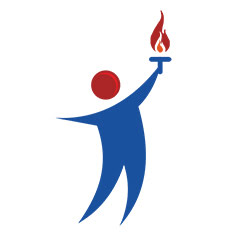
Announcements

Announcements

Meridean Overseas
Updated On 03 September 2024 & Read Time 15 minutes
3.4k
As we know the IELTS exam is an English proficiency test that can help students to know their language accuracy. Now, it is divided into four sections and the reading section can be said the most important one from an academic perspective. If you practice reading passages and solving them then you can improve your speed.
The IELTS Academic Reading section evaluates a test taker's comprehension of challenging academic literature. It comprises three paragraphs, each getting harder, taken from reliable sources like scholarly publications, textbooks, and newspapers. In 60 minutes, candidates must respond to 40 questions testing a range of reading comprehension abilities, such as identifying key ideas, locating specific information, and discerning the author's viewpoint.

In this blog, we have provided one example of an IELTS reading answer concerning “Tree in Trouble”, in which you have to match the headings and fill in the blanks within one or two words.
Table of Contents
Every segment takes 20 minutes to complete. This includes 16–17 minutes for reading and responding to the questions and 3–4 minutes for transferring and double-checking answers.
Paragraph 1: Big trees are incredibly important ecologically. For a start, they sustain countless other species. They provide shelter for many animals, and their trunks and branches can become gardens, hung with green ferns, orchids and bromeliads, coated with mosses and draped with vines. With their tall canopies (leaves and branches that form a cover high above the ground) basking in the sun, they capture vast amounts of energy. This allows them to produce massive crops of fruit, flowers and foliage that sustain much of the animal life in the forest.
Paragraph 2: Only a small number of tree species have the genetic capacity to grow really big. The mightiest are native to North America, but big trees grow all over the globe, from the tropics to the boreal forests of the high latitudes. To achieve giant stature, a tree needs three things: the right place to establish its seedling, good growing conditions and lots of time with low adult mortality(no. of deaths within a particular group). Disrupt any of these, and you can lose your biggest trees.
Paragraph 3: In some parts of the world, populations of big trees are dwindling because their seedlings cannot survive or grow. In southern India, for instance, an aggressive non-native shrub, Lantana camara, is invading the floor of many forests. Lantana grows so thickly that young trees often fail to take root. With no young trees to replace them, it is only a matter of time before most of the big trees disappear. Across much of northern Australia, gamba grass from Africa is overrunning native savannah woodlands. The grass grows up to four metres tall and burns fiercely, creating super-hot fires that cause catastrophic tree mortality.
Paragraph 4: Without the right growing conditions trees cannot get really big, and there is some evidence to suggest tree growth could slow in a warmer world, particularly in environments that are already warm. Having worked for decades at La Selva Biological Station in Puerto Viejo de Sarapiqui, Costa Rica, David and Deborah Clark and colleagues have shown that tree growth there declines markedly in warmer years. “During the day, their photosynthesis shuts down when it gets too warm, and at night, they consume more energy because their metabolic rate increases, much as a reptile’s would when it gets warmer,” explains David Clark. With less energy produced in warmer years and more being consumed just to survive, there is even less energy available for growth.
Paragraph 5: The Clarks’ hypothesis, if correct, means tropical forests would shrink over time. The largest, oldest trees would progressively die off and tend not to be replaced. According to the Clarks, this might trigger a destabilisation of the climate; as older trees die, forests would release some of their stored carbon into the atmosphere, prompting a vicious cycle of further warming, forest shrinkage and carbon emissions.
Paragraph 6: Big trees face threats from elsewhere. The most serious is increasing mortality, especially of mature trees. Across much of the planet, forests of slow-growing ancient trees have been cleared for human use. In western North America, most have been replaced by monocultures of fast-growing conifers. Siberia’s forests are being logged at an incredible rate. Logging in tropical forests is selective, but the timber cutters usually prioritise the biggest and oldest trees. In the Amazon, my colleagues and I found the mortality rate for the biggest trees had tripled in small patches of rainforest surrounded by pasture land. This happens for two reasons. First, as they grow taller, big trees become thicker and less flexible: when winds blow across the surrounding cleared land, there is nothing to stop their acceleration. When they hit the trees, the impact can snap them in half. Second, rainforest fragments dry out when surrounded by dry, hot pastures, and the resulting drought can have devastating consequences: one four-year study has shown that death rates will double for smaller trees but will increase 4.5 times for bigger trees.
Also, read: The Triune Brain - IELTS Reading Answers
Paragraph 7: Particular enemies of large trees are insects and diseases. Across vast areas of western North America, increasingly mild winters are causing massive outbreaks of bark beetles. These tiny creatures can kill entire forests as they tunnel their way through the inside of trees. In both North America and Europe, fungus-causing diseases such as Dutch elm disease have killed off millions of stately trees that once gave beauty to forests and cities. As a result of human activity, such enemies reach even the remotest corners of the world, threatening to make the ancient giants a thing of the past.
Get free IELTS Sample Papers to learn the type of questions asked in the IELTS (Speaking, writing, reading, and listening) section.
Download Now!Questions 1-7
There are seven paragraphs in the reading passage: A–G. From the list of headings below, select the appropriate header for each paragraph. To answer each question, write the proper number, i-x.
List of Heading
i. How Deforestation Harms Isolated Trees
ii. How other plants can cause harm
iii. Which big trees support the most diverse species
iv. Impact of big tree loss on the wider environment
v. Measures to prevent further decline in big tree populations
vi. How wildlife benefits from big trees
vii. Risk from pests and infection
viii. Ways in which industry uses big tree products
ix. How higher temperatures slow the rate of tree growth
x. Factors that enable trees to grow to significant he
Paragraph 1
Paragraph 2
Paragraph 3
Paragraph 4
Paragraph 5
Paragraph 6
Paragraph 7
Questions 8-13
Fill in the blanks in the following sentences. For each response, write no more than two words from the passage.
8. The biggest trees in the world can be found in ___________
9. Some trees in Northern Australia die because of __________ made worse by gamba grass.
10. The Clarks believe that the release of __________ from dead trees could lead to the death of more trees.
11. Strong ____________ are capable of damaging tall trees in the Amazon.
12. ____________ has a worse impact on tall trees than smaller ones.
13. In western Northern America, a species of ___________ has destroyed many trees.
Also, read: Coastal Archaeology of Britain - IELTS Reading Answers
Answers 1-7
vi. How wildlife benefits from big trees
From: In paragraph 1, Big trees are incredibly important ecologically. For a start, they sustain countless other species. They provide shelter for many animals, and their trunks and branches can become gardens, hung with green ferns, orchids and bromeliads, coated with mosses and draped with vines.
Explanation: The reading text "Trees in Trouble" highlights the value of large trees and the environmental risks they confront. The value of large trees and their effects on other organisms in an ecosystem are first discussed in the passage. They provide cover and promote the growth of nearby flora and fauna. Thus, paragraph 1 and the title—How Wildlife Benefits from Big Trees—match.
x – Factors that enable trees to grow to significant heights
From: To achieve giant stature, a tree needs three things: the right place to establish its seedling, good growing conditions and lots of time with low adult mortality(no. of deaths within a particular group).
Explanation: In paragraph 2, the verse states that trees require three distinct things to develop into large trees. The first requirement is to provide a suitable space for the seedlings to grow. Second, they need the right environment to grow in. Lastly, they must have enough time to exist without going extinct. In light of this, paragraph 2 corresponds with Factors that Allow Trees to Grow to Significant Heights.
ii. How other plants can cause harm
From: In paragraph 3, In southern India, for instance, an aggressive non-native shrub, Lantana camara, is invading the floor of many forests. Lantana grows so thickly that young trees often fail to take root. With no young trees to replace them, it is only a matter of time before most of the big trees disappear. Across much of northern Australia, gamba grass from Africa is overrunning native savannah woodlands. The grass grows up to four metres tall and burns fiercely, creating super-hot fires that cause catastrophic tree mortality.
Explanation: The following passage describes how another may harm one plant's growth. The passage gives two instances of this: the Australian gama grass and the southern Indian lantana camara. Both of these plants are replacing the native species. Thus, paragraph 3 and the title, How Other Plants Can Cause Harm, match.
ix – How higher temperatures slow the rate of tree growth
From: In paragraph 4, Without the right growing conditions trees cannot get really big, and there is some evidence to suggest tree growth could slow in a warmer world, particularly in environments that are already warm. Having worked for decades at La Selva Biological Station in Puerto Viejo de Sarapiqui, Costa Rica, David and Deborah Clark and colleagues have shown that tree growth there declines markedly in warmer years.
Explanation: The excerpt in question reports on research done by David and Deborah Clark and associates, which indicates that warmer climates can slow down plant growth. This four-year study found that plants save their summer energy consumption for survival. Thus, they are devoid of growth energy. Thus, paragraph 4 and the title, How Higher Temperatures Slow the Rate of Tree Growth, are compatible.
iv – Impact of big tree loss on the wider environment
From: In paragraph 5, According to the Clarks, this might trigger a destabilisation of the climate; as older trees die, forests would release some of their stored carbon into the atmosphere, prompting a vicious cycle of further warming, forest shrinkage and carbon emissions.
Explanation: The paragraph claims that the demise of larger plants can potentially upset the climate. Reserving carbon are plants. Therefore, carbon emissions occur with plant death. More plants perish as a result of the temperature rising. Thus, paragraph 5 describes how additional environmental losses result from the mortality of more giant trees. The following paragraph matches the headline, Impact of Big Tree Loss on the Wider Environment.
i – How deforestation harms isolated trees
From: In paragraph 6, In the Amazon, my colleagues and I found the mortality rate for the biggest trees had tripled in small patches of rainforest surrounded by pasture land. This happens for two reasons. First, as they grow taller, big trees become thicker and less flexible: when winds blow across the surrounding cleared land, there is nothing to stop their acceleration. When they hit the trees, the impact can snap them in half. Second, rainforest fragments dry out when surrounded by dry, hot pastures, and the resulting drought can have devastating consequences: one four-year study has shown that death rates will double for smaller trees but will increase 4.5 times for bigger trees.
Explanation: The lines above illustrate why deforestation most negatively impacts isolated trees. One of the leading causes is that large, isolated trees have no neighbouring trees to provide support when storms strike. Thus, the effect is multiplied. Another cause is that the earth dries out more quickly as the surrounding forest cover vanishes. Thus, the title of paragraph six is "How Deforestation Harms Isolated Trees."
vii – Risk from pests and infection
From: In paragraph 7, Particular enemies of large trees are insects and diseases. Across vast areas of western North America, increasingly mild winters are causing massive outbreaks of bark beetles. These tiny creatures can kill entire forests as they tunnel their way through the inside of trees. In both North America and Europe, fungus-causing diseases such as Dutch elm disease have killed off millions of stately trees that once gave beauty to forests and cities.
Explanation: The passage's last paragraph describes how diseases and insects wreak havoc on woodlands. The situation with beetles in western North America is used as an example here. Fungal illnesses, like Dutch elm disease in North America and Europe, are examples of infections. This indicates that the title, Risk from Pests and Infection, corresponds with paragraph 7.
North America
From: In paragraph 2, Only a small number of tree species have the genetic capacity to grow really big. The mightiest are native to North America, but big trees grow all over the globe, from the tropics to the boreal forests of the high latitudes.
Explanation: The world's most giant trees are found in North America, according to the following paragraph. More giant trees can be found worldwide, not only in North America but also in tropical and high-latitude areas.
Super-hot-Fires
From: In paragraph 3, Across much of northern Australia, gamba grass from Africa is overrunning native savannah woodlands. The grass grows up to four metres tall and burns fiercely, creating super-hot fires that cause catastrophic tree mortality.
Explanation: As the lines above imply, the fires in Northern Australia are killing trees. One of the main causes of the fires is the African shrub known as gamba grass.
Also, read: Describe a new technological gadget you would like to buy - IELTS cue card
Stored Carbon
From: In paragraph 5, According to the Clarks, this might trigger a destabilisation of the climate; as older trees die, forests would release some of their stored carbon into the atmosphere, prompting a vicious cycle of further warming, forest shrinkage and carbon emissions.
Explanation: As stated in the paragraphs above, their stored carbon is released as old plants age. As a result, more plants die as a result of increased temperatures brought on by carbon emissions.
Winds
From: In paragraph 6, In the Amazon, my colleagues and I found the mortality rate for the biggest trees had tripled in small patches of rainforest surrounded by pasture land. This happens for two reasons. First, as they grow taller, big trees become thicker and less flexible: when winds blow across the surrounding cleared land, there is nothing to stop their acceleration. When they hit the trees, the impact can snap them in half.
Explanation: The passage claims that severe winds can uproot large plants. Plants lose flexibility as they get taller, so large storms can readily harm them. Taller trees experience more significant effects than smaller trees.
Drought
From: In paragraph 6, Rainforest fragments dry out when surrounded by dry, hot pastures, and the resulting drought can have devastating consequences: one four-year study has shown that death rates will double for smaller trees but will increase 4.5 times for bigger trees.
Explanation: As stated in the provided paragraph, drought is one of the main issues affecting trees. According to the study, larger plants are 4.5 times more susceptible to drought than smaller trees.
Beetle
From: In paragraph 7, Particular enemies of large trees are insects and diseases. Across vast areas of western North America, increasingly mild winters are causing massive outbreaks of bark beetles. These tiny creatures can kill entire forests as they tunnel their way through the inside of trees.
Explanation: The last paragraph of the chapter claims that microscopic insects known as beetles have severely damaged western North America's tree population. These tiny insects tunnel into the trees, eventually causing them to perish.
Embark and excel in your study abroad journey with our expert team!

In summary, develop regular reading habits to prepare for the IELTS reading portion. Read a variety of publications, including novels, magazines, and newspapers. Concentrate on language-related topics such as grammar, vocabulary, punctuation, etc.
We hope you learned how to answer the IELTS reading passage. If you want to get further details or would like to prepare for IELTS, you may contact our expert counsellors at Meridean Overseas Education Consultants (MOEC). You can also take free online counselling through our website. Our expert counsellors will provide you with the best support and guidance you need for admission and visa. In addition, they will help you shortlist the universities according to your profile. For more information or any queries, contact application02@meridean.org or 1800-1230-00011.
Boost your IELTS score with effective practice using these sample papers.
Get Your Free Guide

Contact MOEC Experts for Study Abroad Guidance!
By using our site, you agree to our use of cookies.

Hurry up before admissions close.

